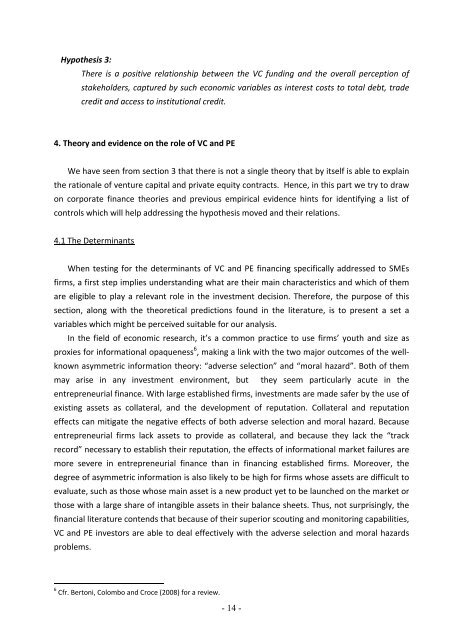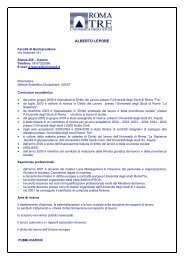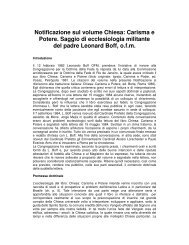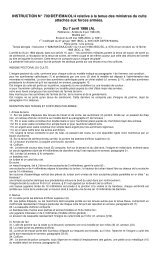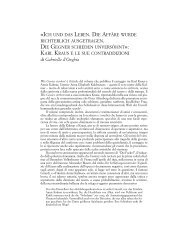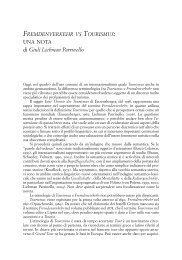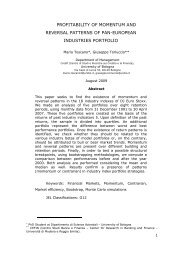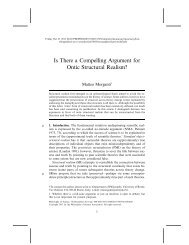Determinants and effects of Venture Capital and Private Equity ...
Determinants and effects of Venture Capital and Private Equity ...
Determinants and effects of Venture Capital and Private Equity ...
Create successful ePaper yourself
Turn your PDF publications into a flip-book with our unique Google optimized e-Paper software.
Hypothesis 3:<br />
There is a positive relationship between the VC funding <strong>and</strong> the overall perception <strong>of</strong><br />
stakeholders, captured by such economic variables as interest costs to total debt, trade<br />
credit <strong>and</strong> access to institutional credit.<br />
4. Theory <strong>and</strong> evidence on the role <strong>of</strong> VC <strong>and</strong> PE<br />
We have seen from section 3 that there is not a single theory that by itself is able to explain<br />
the rationale <strong>of</strong> venture capital <strong>and</strong> private equity contracts. Hence, in this part we try to draw<br />
on corporate finance theories <strong>and</strong> previous empirical evidence hints for identifying a list <strong>of</strong><br />
controls which will help addressing the hypothesis moved <strong>and</strong> their relations.<br />
4.1 The <strong>Determinants</strong><br />
When testing for the determinants <strong>of</strong> VC <strong>and</strong> PE financing specifically addressed to SMEs<br />
firms, a first step implies underst<strong>and</strong>ing what are their main characteristics <strong>and</strong> which <strong>of</strong> them<br />
are eligible to play a relevant role in the investment decision. Therefore, the purpose <strong>of</strong> this<br />
section, along with the theoretical predictions found in the literature, is to present a set a<br />
variables which might be perceived suitable for our analysis.<br />
In the field <strong>of</strong> economic research, it’s a common practice to use firms’ youth <strong>and</strong> size as<br />
proxies for informational opaqueness 6 , making a link with the two major outcomes <strong>of</strong> the well‐<br />
known asymmetric information theory: “adverse selection” <strong>and</strong> “moral hazard”. Both <strong>of</strong> them<br />
may arise in any investment environment, but they seem particularly acute in the<br />
entrepreneurial finance. With large established firms, investments are made safer by the use <strong>of</strong><br />
existing assets as collateral, <strong>and</strong> the development <strong>of</strong> reputation. Collateral <strong>and</strong> reputation<br />
<strong>effects</strong> can mitigate the negative <strong>effects</strong> <strong>of</strong> both adverse selection <strong>and</strong> moral hazard. Because<br />
entrepreneurial firms lack assets to provide as collateral, <strong>and</strong> because they lack the “track<br />
record” necessary to establish their reputation, the <strong>effects</strong> <strong>of</strong> informational market failures are<br />
more severe in entrepreneurial finance than in financing established firms. Moreover, the<br />
degree <strong>of</strong> asymmetric information is also likely to be high for firms whose assets are difficult to<br />
evaluate, such as those whose main asset is a new product yet to be launched on the market or<br />
those with a large share <strong>of</strong> intangible assets in their balance sheets. Thus, not surprisingly, the<br />
financial literature contends that because <strong>of</strong> their superior scouting <strong>and</strong> monitoring capabilities,<br />
VC <strong>and</strong> PE investors are able to deal effectively with the adverse selection <strong>and</strong> moral hazards<br />
problems.<br />
6 Cfr. Bertoni, Colombo <strong>and</strong> Croce (2008) for a review.<br />
- 14 -


